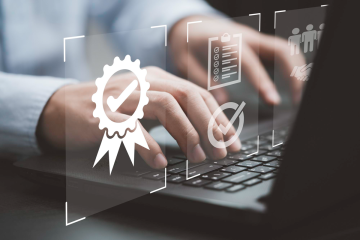In the digital era, where data breaches and cybersecurity threats are increasingly common, adhering to standards like SOC2 is essential for service organizations to protect their customer data and maintain trust. SOC2 compliance focuses on the principles of security, availability, processing integrity, confidentiality, and privacy, and technology plays a pivotal role in meeting these criteria. This post explores the critical technological solutions and controls that can support organizations in achieving and maintaining SOC2 compliance.
Understanding SOC2 Technological Requirements
SOC2 is designed for service providers storing customer data in the cloud, emphasizing the importance of implementing robust and effective information security measures. The technological aspects of SOC2 compliance involve a range of tools and systems designed to protect data against unauthorized access, disclosure, and theft, and to ensure the integrity and availability of data.
Key Technological Solutions for SOC2 Compliance
- Encryption and Data Protection: Implementing encryption for data at rest and in transit is crucial. Encryption ensures that even if data is intercepted or accessed without authorization, it remains unreadable and secure.
- Access Controls: Strong access control mechanisms ensure that only authorized individuals have access to sensitive information. This includes multi-factor authentication (MFA), role-based access controls (RBAC), and the principle of least privilege (PoLP).
- Intrusion Detection and Prevention Systems (IDPS): IDPS tools monitor network and system activities for malicious activities or policy violations, providing real-time protection against threats.
- Security Information and Event Management (SIEM): SIEM solutions offer real-time analysis of security alerts generated by applications and network hardware, helping in the early detection of potential security incidents.
- Vulnerability Management: Regular vulnerability assessments and penetration testing are essential to identify and remediate potential security weaknesses before they can be exploited.
- Disaster Recovery and Business Continuity Planning: Technologies that support data backup, recovery, and business continuity are critical to ensure availability and resilience in the face of disruptions.
Implementing Technological Controls
To effectively implement these technological solutions, organizations should:
- Conduct a thorough risk assessment: Identify and evaluate the risks to customer data and determine the appropriate technological controls needed to mitigate these risks.
- Adopt a layered security approach: Implement multiple layers of security controls to provide comprehensive protection for sensitive information.
- Ensure continuous monitoring and improvement: Utilize monitoring tools to continuously assess the effectiveness of security measures and make necessary adjustments to address new threats and vulnerabilities.
- Document policies and procedures: Clearly document all policies, procedures, and controls related to technology and information security to demonstrate compliance during SOC2 audits.
The Human Element in Technology-Driven Compliance
While technology is critical in achieving SOC2 compliance, it’s important to remember the human element. Regular training and awareness programs for employees on the importance of information security and the specific technologies and policies in place are essential for maintaining a secure environment.
Conclusion
Achieving and maintaining SOC2 compliance is a multifaceted process that requires a combination of effective policies, procedures, and technological solutions. By leveraging the right technologies, organizations can significantly enhance their security posture, ensuring the protection of customer data and compliance with SOC2 principles. As technology continues to evolve, staying ahead of emerging threats and continuously improving security measures will be key to sustaining compliance and trust in the digital age.


